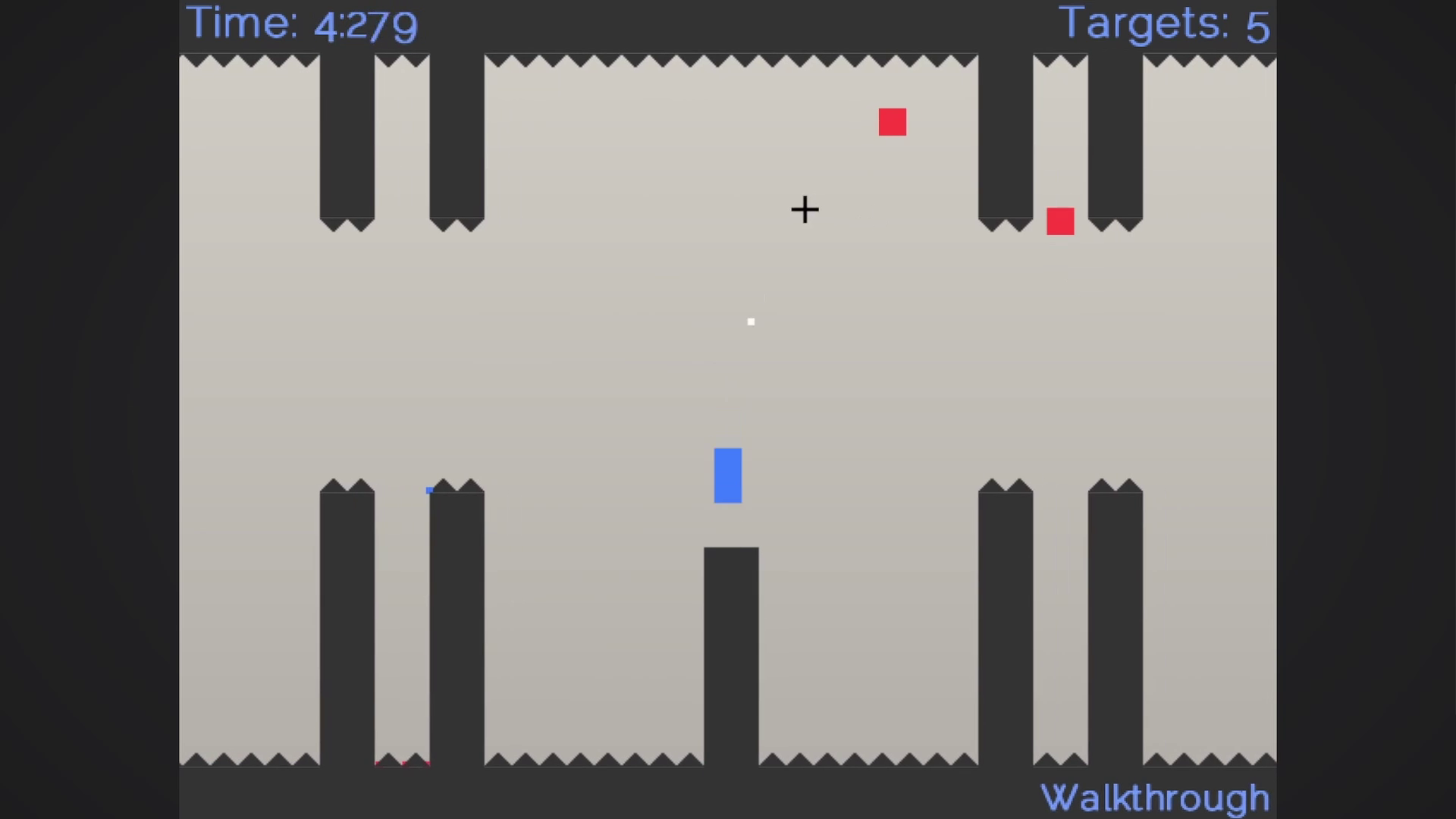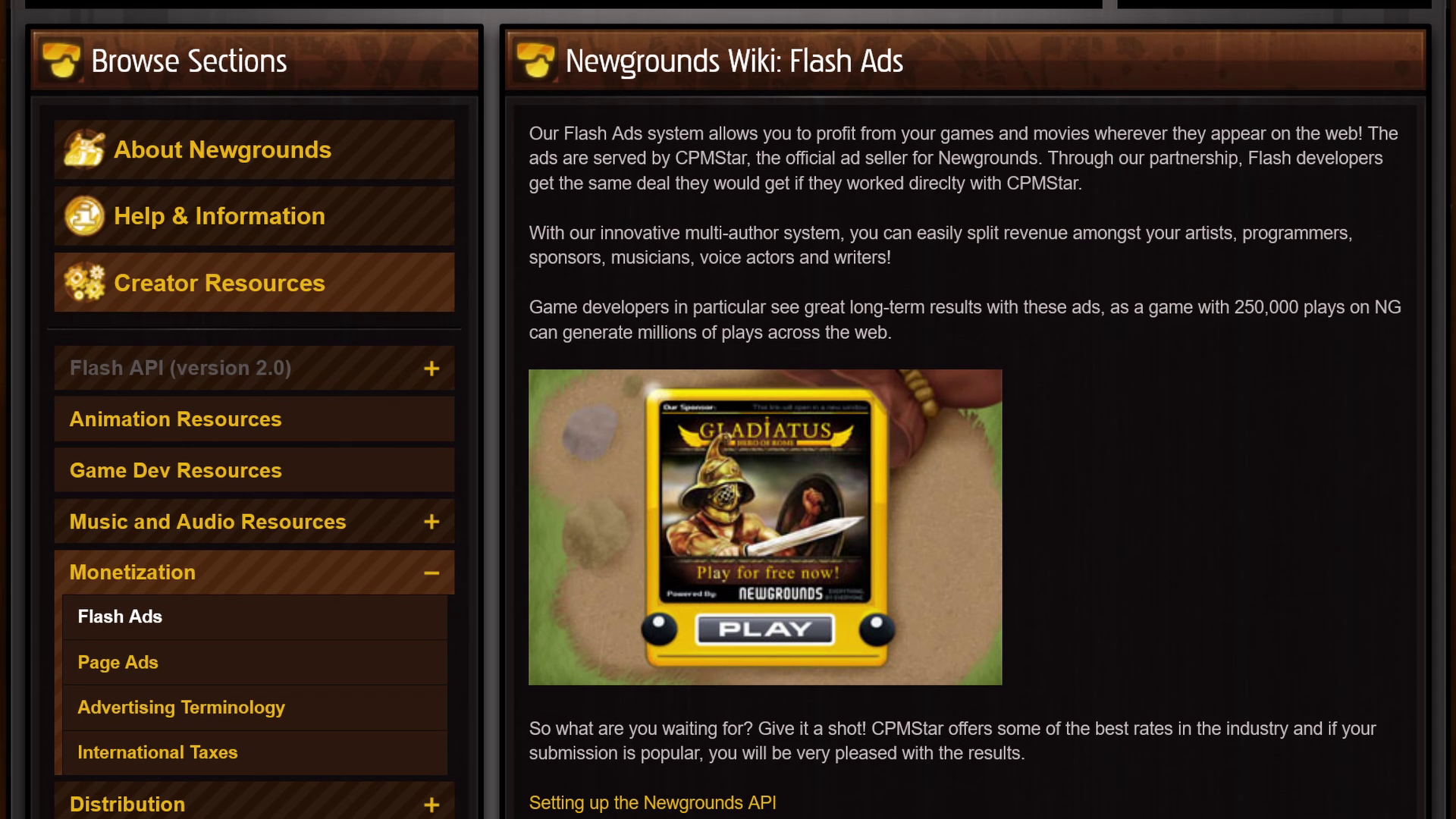Game development in the dying days of Flash
Let’s try something a little bit different today and talk game development history. There’s no point to this article, other than to share some tidbits you might find interesting. If this isn’t your thing, no worries. I’ll be back to my normal stuff in the next post.
The state of Flash
While I had been dabbling in game development on and off (mostly off) for a few years prior, I really started taking it more seriously in the early 2010s and created what I consider to be my first “commercial” game (though I use that term somewhat lightly): Geote.

Geote, which is built on Flash (the web technology, not the development software), is a straightforward game: platform your way around levels, avoiding enemies and obstacles, and shoot all of the targets as fast as possible. Though the premise is simple, it’s quite challenging, both intentionally, because you always die in one hit and have to start over from scratch, and unintentionally, as the player’s bounding box is a bit large and there’s noticeable mouse lag since the cursor is tied to the framerate. Oops!
As Geote is a Flash-based game, it lives on via emulation these days and has been archived at Flashpoint (side note: the “Developer” field is incorrect, though, as Flurothyl only provided the music for the game. Oh well, I guess that’s what I get for not properly branding the game).
I worked on Geote for several months, plus a couple more while polishing and looking for a sponsor (more on that later), and it finally came out in late 2014, which was, in my opinion, a weird transitional period for game development. Steam Greenlight was the only serious way for an indie to sell a PC game, but required you to market your game before any guarantee you’d actually make it onto the platform. Web games mostly ran on Flash, which couldn’t ever get its performance or security quite up to spec, or occasionally Unity’s custom web plugin, which actually wouldn’t last much longer. Mobile was quickly taking over the casual gaming market, but as much as Adobe, and many developers, had hoped Flash could stick around to become the next standard to create both web and mobile applications, its deficiencies plus Steve Jobs’ thoughts on the platform were just too much to overcome. In fact, by this point even Adobe had given up on trying to make the platform viable on mobile. There was, of course, the new kid on the block, HTML5, for gaming, but it was still a bit rough around the edges. In fact, I still remember it was around this time that I finally played my first non-Flash web game that had properly synced audio and a good framerate!
Basically, a lot of tech was coming and going all at the same time.
Making money from games
For now, Flash was still the dominant force, but the writing was on the wall and the money was quickly drying up for web games, which typically brought in revenue from both ads and sponsorships. Web micro-transactions were also kind of a thing on some places like Kongregate at this time, but not very common. Ads are, well, ads, though they were typically less aggressively implemented back then than they are these days, especially on mobile. You’d typically show an ad while the game loaded, but once the user was in the game, ads were far less common. Places like Newgrounds had plugins to streamline the process so that it was incredibly easy to put ads on your load screen, and flash game “piracy”, if you want to call it that, was rampant as a site owner could just grab the game’s .swf file from one site and put it on their own, but it worked out in your favor by getting your game more views, and therefore ad revenue.

Ads were easy to implement, but obviously didn’t pay a lot. Sponsorships, ie adding the branding of another company to your game, were where the real money was at. The terms of a sponsorship would vary, but it was typically something like “We’ll give you $X to show our splash screen after the game loads and have links to our site in all menus.” or “We’ll give you $Y to release your game only on our site.” Sometimes, a contract might also provide funding and some sort of revenue split for a mobile port. In the case of Geote, an additional ask of a short walkthrough video was part of the sponsor contract.
It’s a little hard to find numbers now (sadly a lot of blogs from back then are gone and my bookmarks to many of them lost to time to time anyways), but in the golden era of Flash games, sponsorships could be quite lucrative. One could make a living from it if they had a talent for game design and art, a rare combo made a little more common thanks to the Adobe Flash software package. There were even developers whose entire businesses were built around churning out several games a year, all in the same genre but with slight mechanical tweaks and a fresh coat of paint on top of the same engine. There was good money to be had, and a top-tier game, like probably any of the major ones you remember, could earn tens of thousands of dollars from sponsorships. Even a simple game like Geote would probably fetch four figures during Flash’s prime, but I didn’t release Geote in the golden era of Flash, I released it as Flash was floundering towards a slow death.
Finding sponsors
Sponsorships, even in the declining years, were still where a lot of what money remained could be made with Flash, so how did one find a sponsor? Cold calling was definitely part of the process, but there was also FlashGameLicense (later rebranded to FGL to distance itself from the dying Flash market). FGL is actually still around, but they now focus on mobile publishing and -sigh- Web3. The Wayback Machine can show you what it used to be like.
If you wanted to get your game sponsored, this was the place to be. You uploaded your game and one of the site’s reviewers would play your game and score it, which gave you an idea of if the game had hit the mark or not and what it might, roughly, be worth based on what other games with a similar score had sold for. The process was pretty easy and the forums were active with other developers, sponsors, and site reps. Unfortunately, it was all behind developer accounts that are long gone, and I doubt the forum is still around anyways, so I can’t show you anything, but trust me, it was an interactive and informative place.
Of course, the mood was starting to sour by the time I was getting involved. Revenues were declining across the board and nobody really had a clear path forward. FGL was pushing mobile sponsorships and publishing, but it wasn’t catching on like Flash sponsorships had. Some developers were reluctantly switching to mobile development, but opting to self-publish since the sponsorship potential wasn’t necessarily worth it. Others were leaving game development entirely. I was just there to prove to myself I could make money of any amount from games, but it definitely dampened future aspirations a bit. To make things worse, ultra low budget vultures were now common on the site, making what seemed like automated bids on every game that came through for tiny amounts of cash. I received at least one such offer of $100 to put in branding, port the game to mobile (despite the controls and game not making any sense for that platform), and relinquish all rights to the IP and ad revenue for the game.
Despite the sorry state of things, Geote did get sponsored for a modest amount. Ignoring offers from the vultures, the offer I took was really the only serious offer I got: a few hundred bucks to put in branding and make a walkthrough video. Not a great deal overall, but it at least didn’t feel exploitative like the other ones did. My sponsor was friendly, responsive, and quick to pay once the game was ready to go, but it was clear that this wasn’t an experience that would be worth doing again. As one final test run, I developed a quick experiment after releasing Geote and made a more mobile-friendly, infinite runner type game to see if mobile sponsorship on the site was actually any better, but it wasn’t so I dropped the game and moved on.
The end of Flash
I continued to dabble in game development for a bit after Geote before taking a break from it for a few years while I became occupied with being an adult, but I never bothered to try getting a game sponsored again. By the time I was back, HTML5 was the definitive, and really only, way to have a web game, but the model of making money from web games had died alongside Flash.
In 2017, Adobe officially announced that Flash Player support would end in 2021, though with the rise of mobile applications and browser support for HTML5, it was already effectively dead by the time of the announcement. These days, Flash content lives on thanks to initiatives like Flashpoint Archive working to archive Flash creations, and the Ruffle emulator letting you play Flash content on a modern machine without all of the downsides Flash was known for.
And that was my experience making games during the dying days of Flash. I just wanted to share this because I do find it such an odd time to be an aspiring game developer and because the environment back then was so much different from how it is now that I think it’d be a shame to lose that history. Thanks for reading.